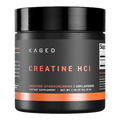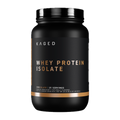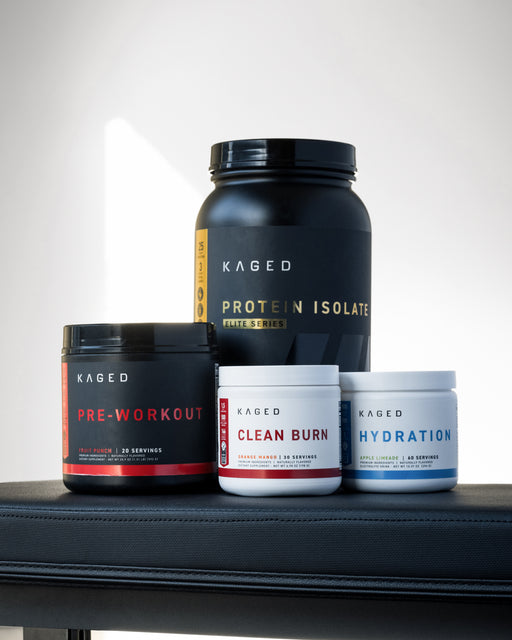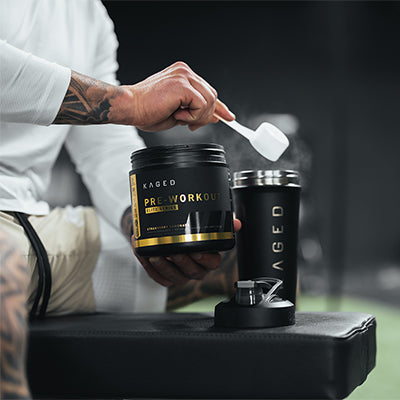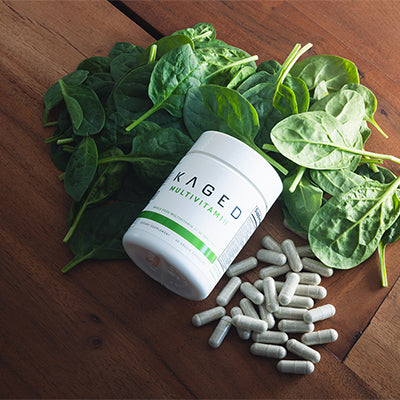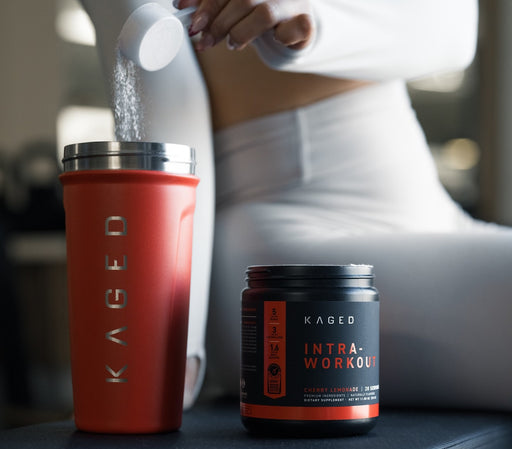
Program Overview
|

Supplement Overview
|

Training Overview
|
The nutrition plan is arguably the most important part because you can’t out train a bad diet. If you’re not fixated on making the right level of effort in the kitchen, forget achieving the results you want! The kitchen is where you will control your energy balance, fuel your muscle growth, and allow your hormones to become your allies.
Just like every other diet, this plan has rules which are in place to help you undergo the ultimate transformation. You’re going to be eating every three hours, veering away from processed foods and sticking with whole, nutrient-dense options instead. Every calorie and macronutrient is going to be measured out on a scale and you should prep your meals yourself for accuracy.
You should vow to yourself that there will be:
- No missed meals
- No excuses for cheating on the plan
With those ground rules in effect, you will be better set up for success. Now, we can delve into more details around nutrition so you understand the theory behind what I’m asking you to do.
What Are Macronutrients?
Macronutrients consist of protein, carbohydrates, and fats. Along with fiber, these are the core nutrients which will make up your diet, broken down into a very specific ratio.
Protein
Protein gives you the building blocks, known as amino acids, to help muscle tissue recover and grow. There are different forms of protein and they all digest at different speeds, so understanding which ones you need at what time throughout the day is very important. You also need a good intake of leucine, found in protein, to enforce muscle protein synthesis. Every gram of protein contains 4 calories.
CarbohydratesThe nutrition plan is arguably the most important part because you can’t out train a bad diet. If you’re not fixated on making the right level of effort in the kitchen, forget achieving the results you want! The kitchen is where you will control your energy balance, fuel your muscle growth, and allow your hormones to become your allies.
Just like every other diet, this plan has rules which are in place to help you undergo the ultimate transformation. You’re going to be eating every three hours, veering away from processed foods and sticking with whole, nutrient-dense options instead. Every calorie and macronutrient is going to be measured out on a scale and you should prep your meals yourself for accuracy.
You should vow to yourself that there will be:
- No missed meals
- No excuses for cheating on the plan
With those ground rules in effect, you will be better set up for success. Now, we can delve into more details around nutrition so you understand the theory behind what I’m asking you to do.
Carbohydrates are your main energy source and are what your body favors to convert into glucose. In the correct quantities, glucose helps fuel your workouts, recovery, and muscle development. There’s no need to fear carbs if your diet is designed properly, which it will be when you use this plan. Every gram of carbohydrates contains 4 calories.
Fat
Fat serves many functions in the body such as boosting brain function, maintaining healthy cholesterol levels, padding your joints, and helping build testosterone levels. Fat will also slow down the speed of digestion, which can be a good or bad thing depending on the time of day. Every gram of fat has 9 calories, which is why you really have to watch your portion sizes carefully.
Fiber
Fiber is the nutrient that enables your body to assimilate the other nutrients to derive their benefits. It’s not enough to eat the right food in the right quantities, you also have to digest them properly so they don’t go to waste. Having a mix of soluble and insoluble fiber in your diet underpins healthy digestion, keeps you regular, and improves your energy levels.
Micronutrients
Micronutrients is a collective term for your vitamins and minerals, which are absolutely intrinsic to your transformation and overall health. To grow, you need to be able to recover, rejuvenate your central nervous system, rid your body of harmful toxins, and sustain good immune health. This is what micronutrients do for you, which you will mainly get from vegetables and a wide range of natural foods within your diet.
Different micronutrients also have more specific benefits, such as zinc and its ability to boost testosterone, or calcium's ability to help your muscles contract during training.
CALCULATING YOUR CALORIES
This program will give you specific macronutrient and calorie targets to aim for so you’ll need to know how to calculate them. Remember that:
- Every gram of protein has 4 calories
- Every gram of carbohydrates has 4 calories
- Every gram of fat has 9 calories
Once you have established your caloric intake, I suggest tallying your specific values up each meal, either on a piece of paper or using an app specific for this purpose. This way you know that you’ve met your target for the day so you’re accountable. Once you get into a routine, you might find that you stick to the same or very similar meals. In this case, you won’t need to run the calculations as frequently.
Macro Calorie Calculator
Results
| Total Daily Calories: |
0 |
| Calories from Protein: |
0 |
| Calories from Fat: |
0 |
| Calories from Carbs: |
0 |
BODY TYPES
We all have one of three body types, which are categorized as:
- Ectomorph – someone who is naturally skinny and struggles to gain weight
- Endomorph – someone who naturally carries more fat and can build muscle
- Mesomorph – someone who naturally builds muscle and stays lean
It’s fair to say that most people are actually a hybrid of more than one of these types. These characteristics play a role in determining what kind of diet is most appropriate for you. There will be disparities between different body types when it comes to nutrition, however you don’t need to complicate things too much. Just be aware of this variable.
The program has been designed to take your personal goal into consideration. Depending on your goal, you will need to pick the appropriate ratio of macros as outlined below. Take your time and discover which you think is most suitable for your current goals.
Muscle Building: 35% protein, 20% fat, 45% carbs
Fat Loss: 50% protein, 15% fat, 35% carbs
The below calculations will act as a guide for you to determine exactly what your macros and calories need to be for your goal, based on your current body weight. Get your calculator out and start mapping!
Caloric Intake Based on Bodyweight (lbs) & Primary Goal:
- Fat Loss - 10-13 x Bodyweight
- Maintenance - 14-16 x Bodyweight
- Muscle Gain - 17-20 x Bodyweight
- Mass Muscle Gain - 20-25 x Bodyweight (e.g. 25 x 225lbs = 5,625 cals)
Be aware that the above guideline isn’t a “one size fits all” formula. You will have to do a degree of analysis so that you can determine if the numbers are right for you and your goal. As you can see, there is a range in each of the categories. Consider this range to be based on your activity level – if you work a desk job, you should stick to the lower number on the scale. On the other hand, if you work a physically intense job such as a construction worker, you will likely fall towards the higher end.
Below is a list of food options per macro group that are great options to eat. I encourage you to use as much variety as possible for the nutrient benefits.
| Protein Sources: |
Chicken Breast, Turkey Breast, Fish, Lean Steak, Lean Pork Loin, Ostrich, Venison |
| Vegetarian |
Whey Protein Isolate, Cottage Cheese, Egg Whites, Eggs, Soy, Greek Yogurt
|
| Complex Carbohydrate Sources: |
Potato, Sweet Potato, White Rice, Brown Rice, Oats, Quinoa, Couscous, Rye Bread, Whole Wheat Bread, Whole Wheat Rice Cakes, Whole Wheat Pasta, Yams
|
| Fibrous Carb Sources: |
Broccoli, Asparagus, Cabbage, Spinach, Cauliflower, Bell Peppers, Lettuce, Cucumber, Tomatoes
|
| Fat Sources: |
Egg Yolks, Almonds, Walnuts, MCT Oil, Avocado, Coconut Butter, Flaxseed Oil
|
| Fruit Sources: |
Apples, Bananas, Cantaloupe, Pears, Plums, Grapes, Kiwi, Apricots, Nectarines, Peaches, Blueberries, Oranges, Grapefruit, Strawberries
|
Sample Meal Plan
To help you understand how your daily meals should look on paper, I’ve outlined a sample diet below. Keep in mind this is just an example as you’ll need to work from your own macro calculations to determine quantities, then pick the foods you like from the list to create your own meals.
I strongly recommend you eat in this format to get a meal in every three hours.
Meal 1: 5 egg whites, 2oz of oatmeal, 4oz of pineapple, and 1 serving of RE-KAGED
Meal 2: 5oz of chicken breast, 2oz (uncooked) rice, 3oz of broccoli
Meal 3: 6oz of salmon fillet, 6oz of sweet potato, 3oz of kale
Meal 4: 5oz of turkey steak, 2oz (uncooked) rice, 1oz of almonds, 2oz of spinach
Meal 5: 5oz of flank steak, 4oz of baked potato, 3oz of broccoli, 2oz of strawberries
Meal 6: 1 serving of KASEIN, 2oz of oatmeal
Post-workout: have another serving of RE-KAGED immediately after the workout.
Download the Shopping List
Action Plan
- Decide what your goal is
- Pick the right set of macros
- Decide which foods are most suitable to your personal taste off the list
- Calculate your numbers and get your grocery shopping done
- Buy enough food for at least a week
- Prep at least four days’ worth of food so you never miss a meal
- Get your KAGED supplement order in
- Get your ass to the gym!


